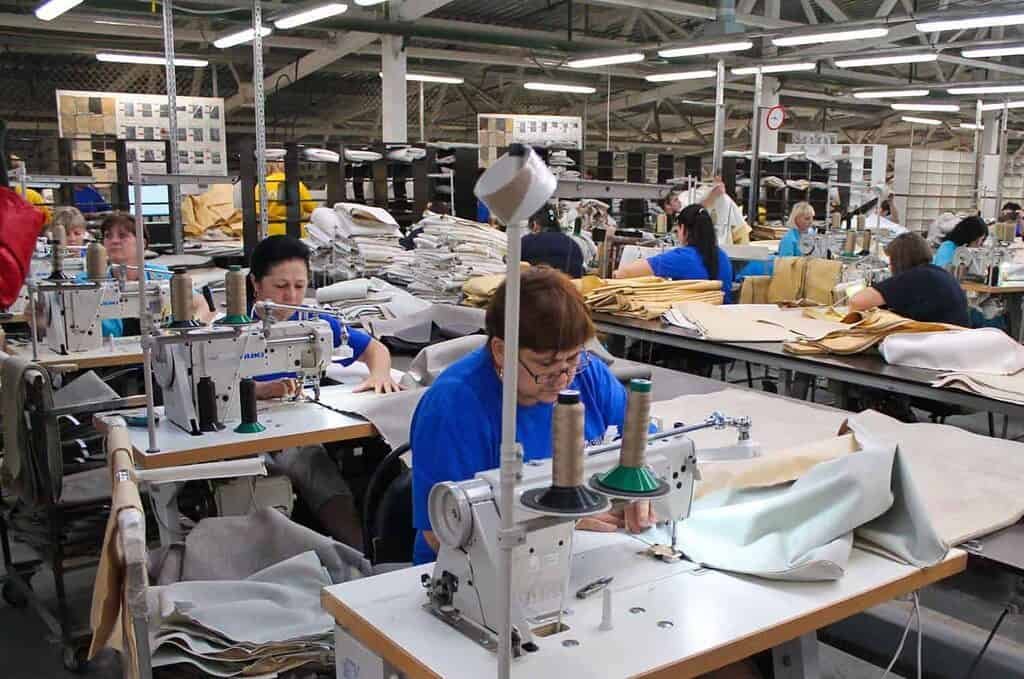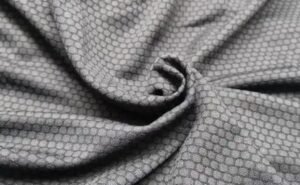When choosing clothing manufacturers, the country is also a very important factor. Among them, political factors and trade policies also greatly affect whether a clothing manufacturer can become a stable and long-term cooperative supplier.
Major Import And Export Countries Of Global Garment Manufacturing Industry And The Situation
In 2018 clothing export market, China, the European Union (28 countries), Bangladesh and Vietnam ranked among the top four in the world , accounting for 72.3% of the world clothing trade market share, lower than 75.8% in 2017. This is mainly due to the decline of China’s clothing export market share in 2018.
Although Vietnam and Bangladesh achieved significant growth in clothing exports in 2018, with clothing exports growing by 13.4% and 11.1% respectively, their market share has been limited.
The concentration of main export countries is still high, but increasingly diversified. From the perspective of textile and clothing import and export countries, the leading import and export countries still occupy the main global trade share but is declining, and the market capacity of others are expanding.
Global Garment Export Factors Are Subject To Various Influences
There are many factors that affect clothing export, price and quality are not single indicators. Clothing industry is an industry with a high concentration of labor. Although there is machine processing, sewing, typesetting are still inseparable from the hands of assembly line workers. Therefore, the wages of workers will generally become the primary factor considered by importers. After comparing the changes of workers’ wages in developed countries and developing countries in recent years, we draw a conclusion: workers’ wages in developed countries are generally much higher than those in developing countries, but the wage level is stable, and there is no upward trend in recent years. The wages of workers in developing countries are low but have risen sharply in recent years.
However, the labor cost accounts for about 4% of the total cost. A country with a large export volume, mature infrastructure and delivery capacity will be more reassuring. What is saved here is not only money, but also operating costs: time and energy. Located in the south of North America and the northwest of Latin America, the only place for land transportation in South America and North America,Mexico,which is known as “Land Bridge” . Thanks to its unique geographical location, Mexico has become the darling of the United States and the second largest exporter in North America. The short delivery time and lower transportation cost brought by the close geographical location make the sustainable development brands in developed countries prefer Mexico. In addition, the stable political and trade situation, environmental protection, compliance with laws and regulations and legal labor rights are also factors that affect clothing exports.
The Trend Of Global Clothing Export Is Diversified
At present, the global clothing manufacturing exports are mainly concentrated in developing countries. However, because of the turbulence of the international situation, trade wars and other factors in recent years, importers are worried about the trade prospects of these countries and are more cautious and thoughtful about trade exchanges. As the largest exporter in Asia, despite China’s dominant export share in developing countries, China’s export trade has been declining in recent years, which shows that the situation in the global garment manufacturing industry is changing quietly. In recent years, China’s foreign trade market has suffered a lot. The rising trade barriers, tariffs and the trade war of the United States have made foreign trade exports in dire straits. Due to the suppression of these export policies, the cost of importers and unstable factors have surged, which has led some multinational brand companies to quietly transfer their factories to India, Vietnam and some low labour cost and less tense politics countries.
China’s market loss has benefited Vietnam, Bangladesh, Mexico and other countries. In 2018, Vietnam and Bangladesh accounted for 6.2% and 6.4% of the global clothing export market respectively, with a total market share of 12.7%, up 0.3 percentage points from 12.3% in 2017. In 2015, the Trans Pacific Strategic Economic Partnership (TPP) was signed. Vietnam’s main textile industry exports to the United States enjoy zero tariff, far lower than the current tax rate of 17% to 32%, and the price is highly competitive. The zero tariff policy greatly stimulates the export of the textile industry, and at the same time, it can also promote the entry of foreign direct investment. The United States and Mexico, among the TPP member countries, are both major producers of textile materials and fabrics. The purpose of their rules of origin is to encourage Vietnam to reduce its imports of clothing fabrics and accessories from China, thus increasing its imports of similar products from the United States and Mexico. At present, Vietnam’s advantages mainly lie in the garment manufacturing link of the industrial chain. The overall industrial supporting capacity is very poor, and most of the surface and auxiliary materials need to be imported from China.
Who Will Win In The Competition, China Or Mexico?

Mexico is one of the major textile and garment trading countries in the world. The textile and garment industry is its traditional competitive industry and plays an important role in Mexico’s national economy. In the first half of 2015, Mexico surpassed Bangladesh and became the fifth largest source of clothing imports from the United States, with China, Vietnam, South Korea and Malaysia ranking first. The United States is the most important market for Mexican clothing products. 94% of trousers, shirts, bedding, curtains, etc. produced by Mexican enterprises are sold to the United States market.
From the perspective of geographical location, Mexico’s unique geopolitical environment and trade hub status have been created by its unique geographical advantages. From the perspective of political trade, Mexico is one of the countries that have signed the most free trade agreements in the world, and it is also the first developing country to sign free trade agreements with the world’s two major trade groups, the North American Free Trade Area and the European Union. Up to now, Mexico has signed 12 Free Trade Agreements with 44 countries in the world, established a huge strategic trade network, and diversified its export markets. Mexican goods can be exported to more than 40 countries such as the United States, Canada, the European Union, Japan and Latin America in the form of zero tariff.
From the perspective of delivery time and labor force, Mexico has sufficient labor force resources. The foundation, young and high-quality population structure of the second most populous country in Latin America guarantees its sufficient and low-cost labor supply. In recent years, Mexico’s clothing industry has gone out of the stage of processing and exporting relying on cheap labor, adopting international standards, and focusing on value-added and fashion of clothing products. According to the requirements of American consumers and clothing sales industry, the clothing supply cycle is only 3 weeks.
In The Face Of Strong Competitors, How Can China Break Through?
Since 2011, China’s textile and clothing exports to Mexico have maintained a rapid growth, with 46.21% in 2011, 15.02% in 2012, 18.06% in 2013 and 24.05% in 2014. China has become an important textile and clothing import source country of Mexico.
For high-end functional fabrics, accessories, sportswear, fashion and other products with complex processes, Mexico does not have production advantages at present and mainly relies on imports. Cheap medium and low-end fabrics and clothing can also be favored by the Mexican market, and high-quality and inexpensive Chinese textile products are increasingly popular in the Mexican market.
China has a complete textile industry chain and supporting facilities, and has a strong trade complementarity with Mexico’s relatively weak industrial supporting level of textile industry and strong domestic demand. With the technological innovation and product upgrading of China’s textile industry, the textile industry has developed rapidly, with obvious technological and cost advantages. Therefore, it is very unlikely that Mexico will replace China as a major clothing exporter in the short term, but the increasingly stringent foreign trade policy and the deteriorating political situation are really big problems that China needs to solve and break through.







